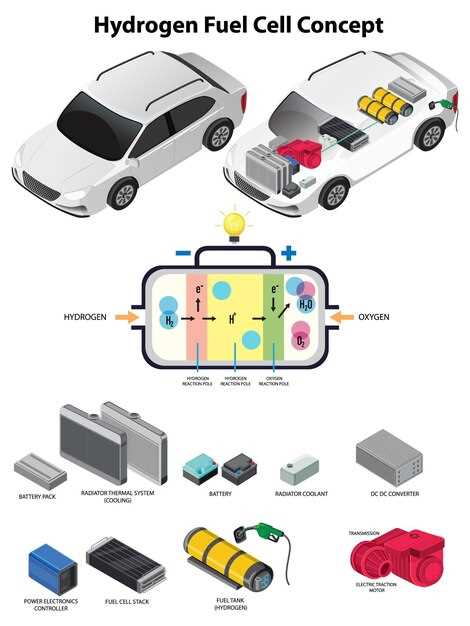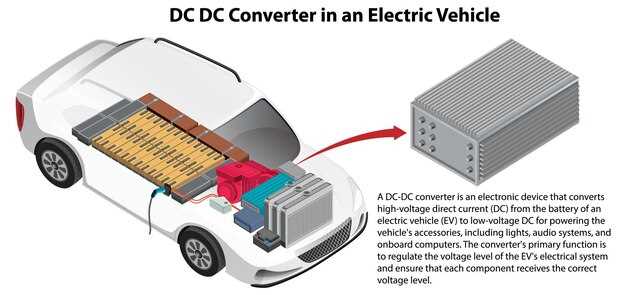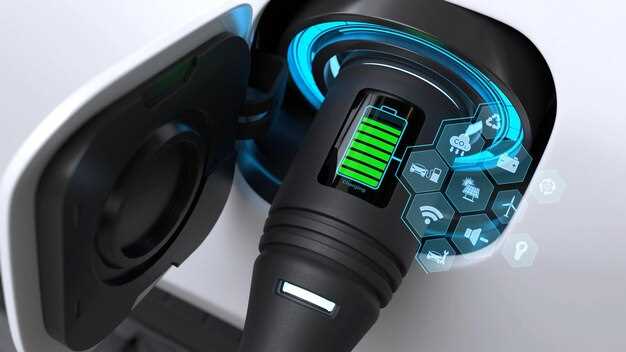
As the world shifts towards sustainable transportation solutions, electric trucks have emerged as a vital component in reducing carbon emissions and enhancing energy efficiency. One of the key technologies that contribute to the efficiency of these vehicles is regenerative braking. This innovative system plays a crucial role in harnessing energy typically lost during braking, thereby improving overall vehicle performance and range.
Regenerative braking works by converting the energy generated during deceleration back into usable electrical energy. Instead of solely relying on traditional friction brakes, electric trucks utilize their electric motors to slow down. When the driver applies the brakes, the motor operates in reverse, acting as a generator that converts kinetic energy into stored electricity in the vehicle’s battery. This process not only enhances energy efficiency but also reduces wear and tear on mechanical brake components.
Understanding the mechanics and benefits of regenerative braking is essential for both manufacturers and fleet operators. By maximizing the efficacy of this system, electric trucks can achieve longer distances on a single charge while minimizing operational costs. This article delves into the principles of regenerative braking, its impact on electric truck performance, and the future implications for the transportation industry.
How Does Regenerative Braking Work in Electric Trucks?

Regenerative braking is a key feature in electric trucks, allowing them to recover energy during braking and extend their range. This process takes advantage of the truck’s electric motor, which, when decelerating, switches from consuming power to generating it.
When the driver applies the brakes, the electric motor reverses its role. Instead of using electricity to create motion, the motor acts as a generator. As the wheels turn the motor, kinetic energy from the truck’s movement is converted back into electrical energy. This process slows down the vehicle while simultaneously charging the vehicle’s battery. The efficiency of this energy conversion can vary but typically captures a significant portion of kinetic energy that would otherwise be lost as heat in traditional braking systems.
Modern electric trucks utilize sophisticated control systems to manage the transition between acceleration and regenerative braking. Sensors monitor the vehicle’s speed and the driver’s input to optimize the braking force and ensure smooth deceleration. By adjusting the level of regenerative braking, drivers can have an enhanced experience, feeling a gradual slowdown rather than abrupt halting. This contributes to driver comfort and safety.
In addition to energy recovery, regenerative braking also reduces wear on conventional brake components. Since the electric motor handles a majority of the braking, traditional brake pads experience less friction and, consequently, last longer. This not only lowers maintenance costs but also promotes a more sustainable operational model.
Overall, regenerative braking in electric trucks represents a combination of efficiency and innovation, enhancing both performance and sustainability in the transportation sector. By capturing energy that would typically be wasted, electric trucks can operate more effectively and reduce their environmental impact. This technology exemplifies the ongoing evolution in electric vehicle engineering, paving the way for a more energy-efficient future.
Benefits of Regenerative Braking for Long-Distance Hauling
Regenerative braking systems offer significant advantages for electric trucks engaged in long-distance hauling. One of the most notable benefits is energy efficiency. During braking, the system captures kinetic energy that would otherwise be wasted as heat and converts it back into electrical energy. This capability allows trucks to recharge their batteries while slowing down, extending their range without requiring frequent stops for recharging.
Another advantage is reduced maintenance costs. Traditional braking systems rely heavily on friction, leading to wear and tear on brake pads and rotors. In contrast, regenerative braking uses electric motors to slow the vehicle, significantly decreasing the wear on conventional brake components. This reduction in wear translates to lower maintenance expenses and extended periods between service intervals, which is particularly beneficial for long-haul operations.
The implementation of regenerative braking also contributes to enhanced vehicle control and safety. Electric trucks equipped with this technology can achieve smoother deceleration, reducing the risk of skidding or loss of traction, especially on downhill slopes or in adverse weather conditions. This capability improves overall vehicle handling and driver confidence during long trips.
Furthermore, regenerative braking helps reduce the environmental impact of long-distance hauling. By recapturing energy and reducing reliance on conventional charging infrastructure, electric trucks can minimize their carbon footprint. As the demand for sustainable transport solutions continues to grow, this feature positions electric trucks as a more eco-friendly option compared to diesel-powered counterparts.
Lastly, the use of regenerative braking can lead to higher payload capacities. By recycling energy and optimizing the overall efficiency of electric trucks, less battery capacity is needed for long-haul trips, allowing for more space for cargo. This increase in operational efficiency is crucial for businesses aiming to optimize logistics and maximize profitability.
Common Challenges and Solutions in Implementing Regenerative Braking

Implementing regenerative braking in electric trucks presents several challenges that must be addressed to optimize performance and efficiency. One significant challenge is the complexity of integration with existing braking systems. Traditional hydraulic brakes are commonly used in commercial trucks, and retrofitting these vehicles to accommodate regenerative braking can be complicated. This requires careful engineering to ensure that both systems work seamlessly together. As a solution, manufacturers are developing hybrid systems that combine regenerative and conventional braking technologies to provide a balanced approach that maximizes energy recovery while maintaining safety.
Another issue is the variability in energy recovery based on driving conditions. Factors such as load weight, terrain, and driving behavior significantly affect the efficiency of regenerative braking systems. Heavy loads can reduce the effectiveness of energy recovery, as more kinetic energy is needed to stop. Implementing advanced algorithms and machine learning techniques can help optimize the regeneration process by predicting driving patterns and adjusting the braking strategy accordingly.
Thermal management is also a critical concern. Regenerative braking systems generate heat during energy recovery, which can impact the efficiency and longevity of components. Managing this heat is essential to prevent overheating and ensure reliable system performance. Solutions include advanced cooling systems and materials that can withstand higher temperatures, as well as active thermal management strategies to keep component temperatures within optimal ranges.
Furthermore, driver familiarity and acceptance present another challenge. Many truck operators may be accustomed to traditional braking systems, making it essential to provide adequate training and information about how regenerative braking functions. Educational programs and demonstration sessions can help facilitate a smoother transition and encourage drivers to utilize regeneration effectively.
Finally, the initial cost of implementing regenerative braking systems can be a deterrent for many fleets. Despite the long-term savings associated with energy recovery, the upfront investment remains a concern. As technology advances and economies of scale come into play, these costs are expected to decrease. In addition, financial incentives, government subsidies, and tax credits can serve as effective solutions to mitigate initial investment barriers and encourage adoption across the industry.



